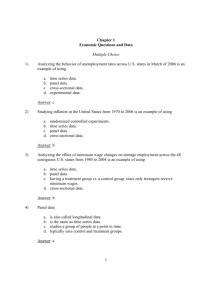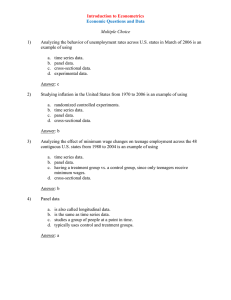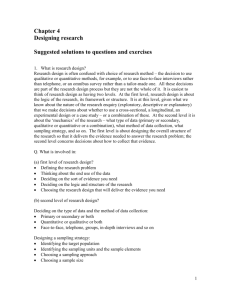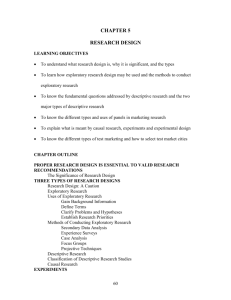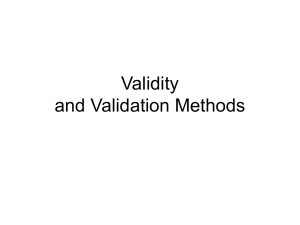Chapter 6 - Cengage Learning
advertisement
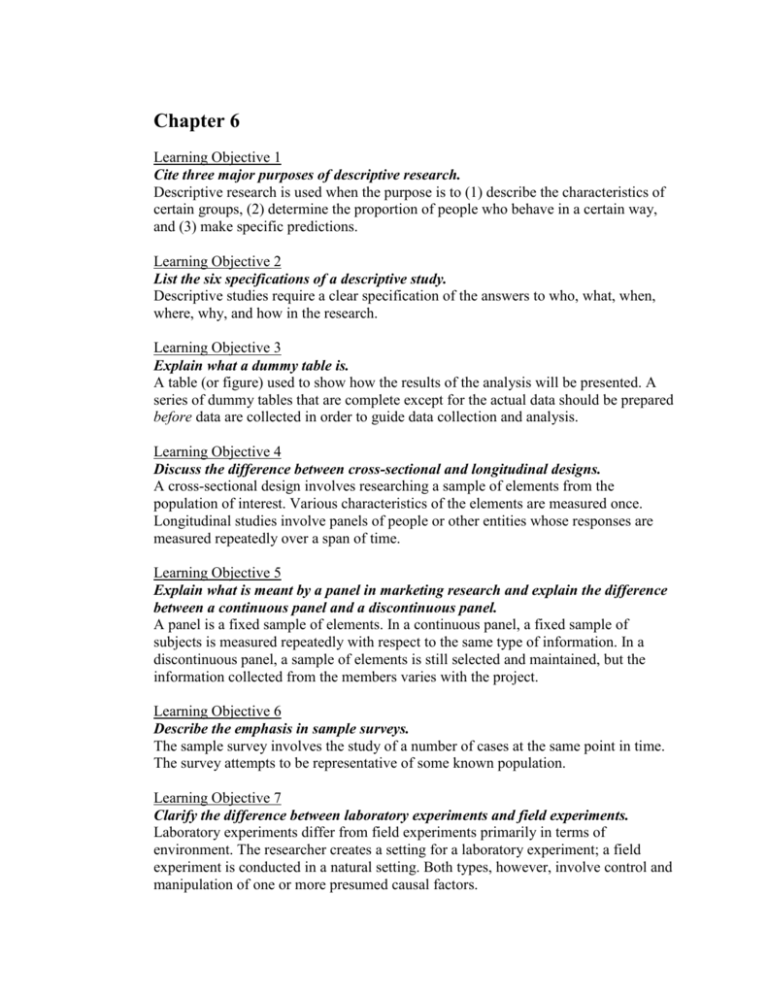
Chapter 6 Learning Objective 1 Cite three major purposes of descriptive research. Descriptive research is used when the purpose is to (1) describe the characteristics of certain groups, (2) determine the proportion of people who behave in a certain way, and (3) make specific predictions. Learning Objective 2 List the six specifications of a descriptive study. Descriptive studies require a clear specification of the answers to who, what, when, where, why, and how in the research. Learning Objective 3 Explain what a dummy table is. A table (or figure) used to show how the results of the analysis will be presented. A series of dummy tables that are complete except for the actual data should be prepared before data are collected in order to guide data collection and analysis. Learning Objective 4 Discuss the difference between cross-sectional and longitudinal designs. A cross-sectional design involves researching a sample of elements from the population of interest. Various characteristics of the elements are measured once. Longitudinal studies involve panels of people or other entities whose responses are measured repeatedly over a span of time. Learning Objective 5 Explain what is meant by a panel in marketing research and explain the difference between a continuous panel and a discontinuous panel. A panel is a fixed sample of elements. In a continuous panel, a fixed sample of subjects is measured repeatedly with respect to the same type of information. In a discontinuous panel, a sample of elements is still selected and maintained, but the information collected from the members varies with the project. Learning Objective 6 Describe the emphasis in sample surveys. The sample survey involves the study of a number of cases at the same point in time. The survey attempts to be representative of some known population. Learning Objective 7 Clarify the difference between laboratory experiments and field experiments. Laboratory experiments differ from field experiments primarily in terms of environment. The researcher creates a setting for a laboratory experiment; a field experiment is conducted in a natural setting. Both types, however, involve control and manipulation of one or more presumed causal factors. Learning Objective 8 Explain which of the two types of experiments has greater internal validity and which has greater external validity. The laboratory experiment typically has greater internal validity because it allows greater control of the variables. Field experiments are generally considered more externally valid, meaning that their results are better able to be generalized to other situations. Learning Objective 9 List the three major problems in test marketing. Three of the more critical problems in test marketing are cost, time, and control. Learning Objective 10 Distinguish between a standard test market and a controlled test market. A standard test market is one in which companies sell the product through their normal distribution channels, and results are typically monitored by a standard distribution service. In a controlled test market, the entire program is conducted by an outside service. The service pays retailers for shelf space and therefore can guarantee distribution to those stores that represent a predetermined percentage of the marketer’s total store sales volume. Learning Objective 11 Discuss the advantages and disadvantages of simulated test marketing. Simulated test-marketing studies provide the following advantages: (1) They protect a marketer from competitors, (2) they are faster and cheaper than full-scale tests, and (3) they are particularly good for spotting weak products. However, they do have disadvantages in that they cannot provide any information about the firm’s ability to secure trade support for a product or indicate what competitive reaction is likely to be.



